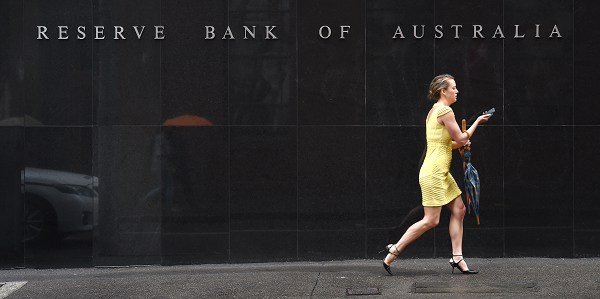Tuesday, 03 November 2015 12:03
 SYDNEY: Australia’s central bank on Tuesday held interest rates at a record low 2.0 percent, but kept the door open for further easing as the economy slows on softening Chinese growth.
SYDNEY: Australia’s central bank on Tuesday held interest rates at a record low 2.0 percent, but kept the door open for further easing as the economy slows on softening Chinese growth.
Economists had been split about whether the Reserve Bank of Australia would act this month, after a surprisingly weak third-quarter reading of consumer prices released last week gave the central bank room to slash rates further.
“The board judged that the prospects for an improvement in economic conditions had firmed a little over recent months and that leaving the cash rate unchanged was appropriate at this meeting,” governor Glenn Stevens said in a statement after the monthly meet.
“Members also observed that the outlook for inflation may afford scope for further easing of policy, should that be appropriate to lend support to demand.”
The central bank has already cut the cash rate by 25 basis points in both February and May this year.
Like other resources-dependent economies, Australia has been hit by slowing growth in China, its largest trading partner and the world’s biggest commodities consumer.
The country is already enduring a rocky transition towards non-resources-led growth after an unprecedented mining investment boom helped its economy avoid a recession for 24 years.
The jobless rate has fluctuated between 6.0-6.4 percent, a decade high, over the past year, while spending by businesses outside the mining sector is yet to fill the gap left by falling resources investment.
Despite this, there have been signs of a gradual improvement in forward-looking labour surveys, along with a recent boost in business and consumer confidence following the appointment of multimillionaire former businessman Malcolm Turnbull as prime minister following a Liberal Party coup.
The Australian dollar bounced between 71.3 US cents and 72 US cents after the announcement before settling close to where it was before at 71.70 US cents.
“I think (the RBA) is more comfortable with the growth outlook and business surveys are showing an improvement but with inflation so low, it gives them room for manoeuver if they need to down the track,” Barclays chief economist for Australia Kieran Davies told AFP.
The year-on-year Consumer Price Index (CPI) reading came in at 1.5 percent during the September quarter, the Australian Bureau of Statistics (ABS) said last week.
Underlying inflation — the preferred measure for the RBA — was at 2.15 percent year-on-year, at the lower end of the central bank’s target range of 2.0-3.0 percent.
“But they seemed comfortable with staying on hold. I think the market will keep the risk of a cut priced in, given the RBA’s got the room to move if needed.”

























